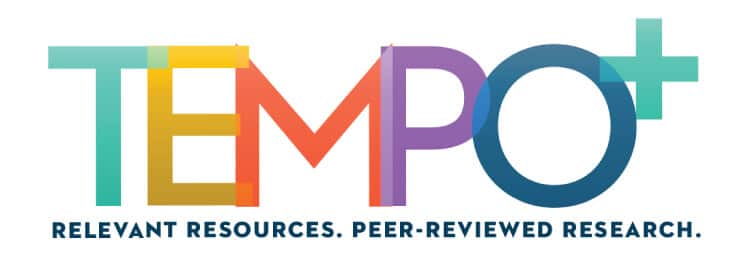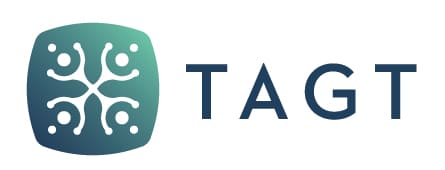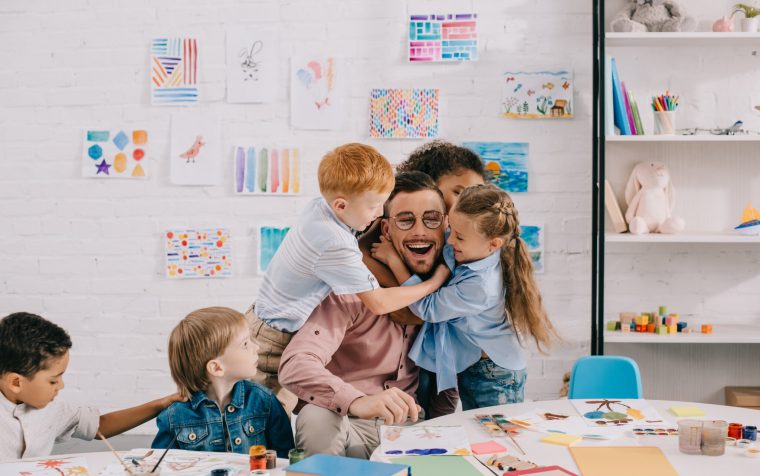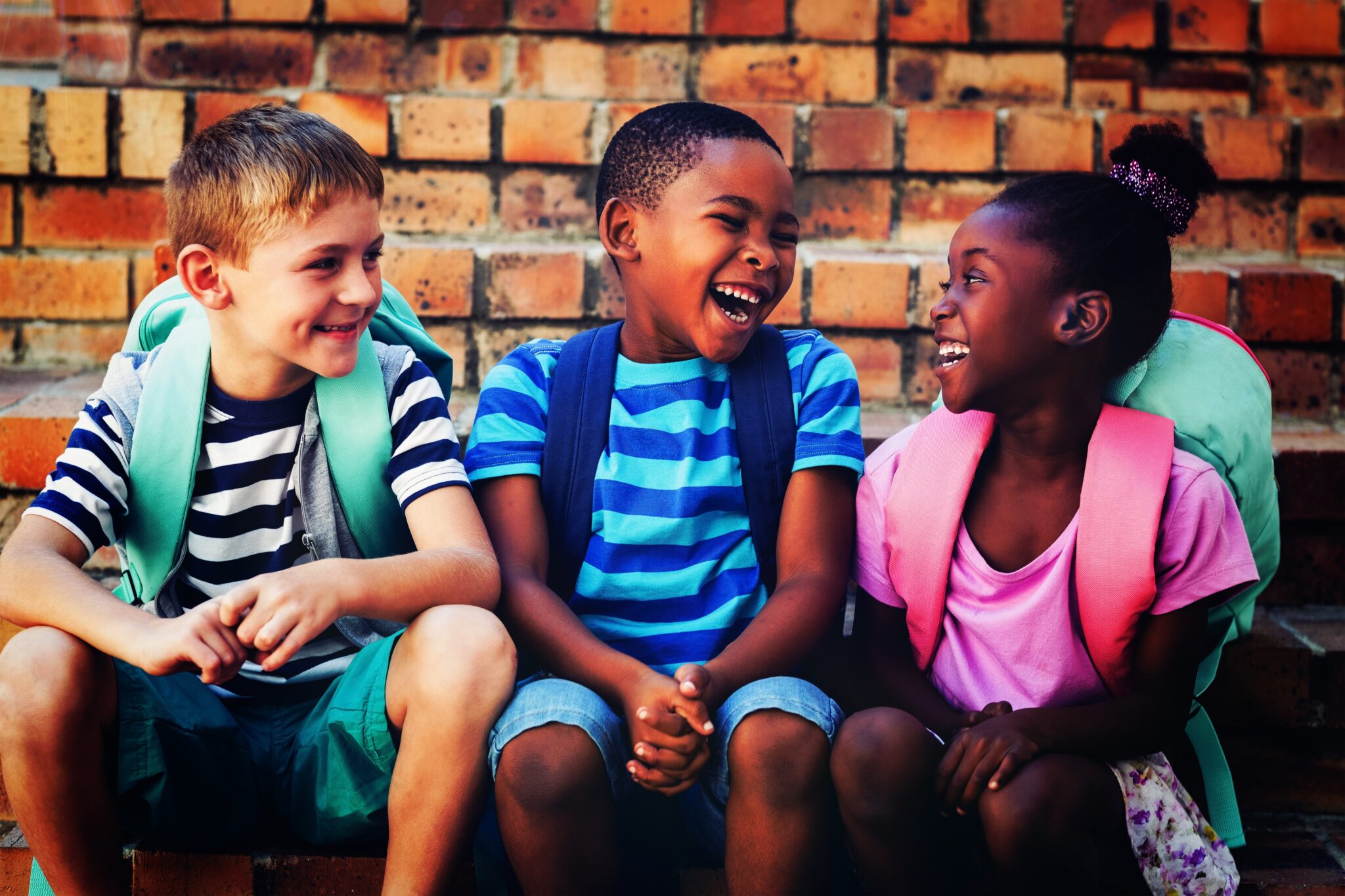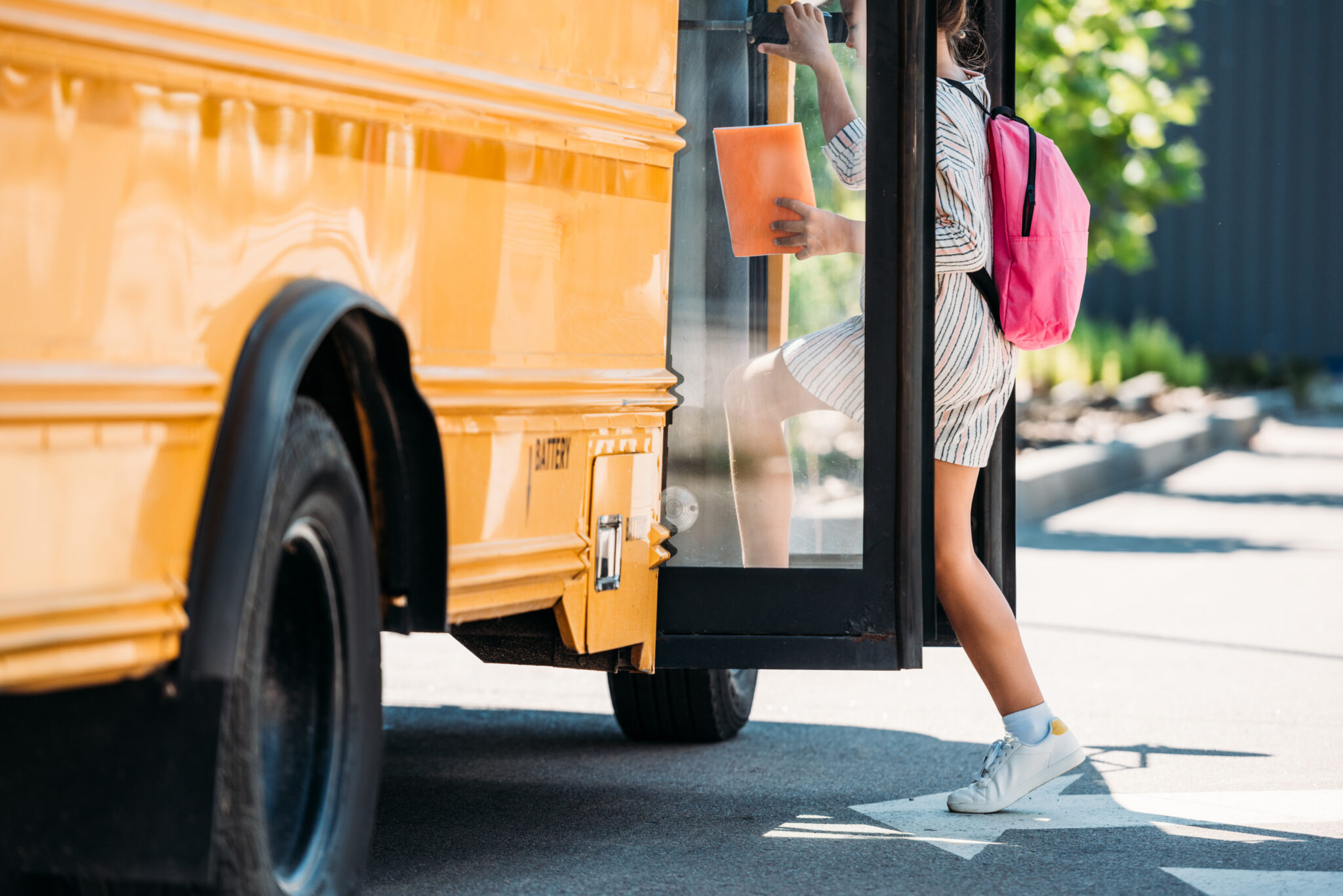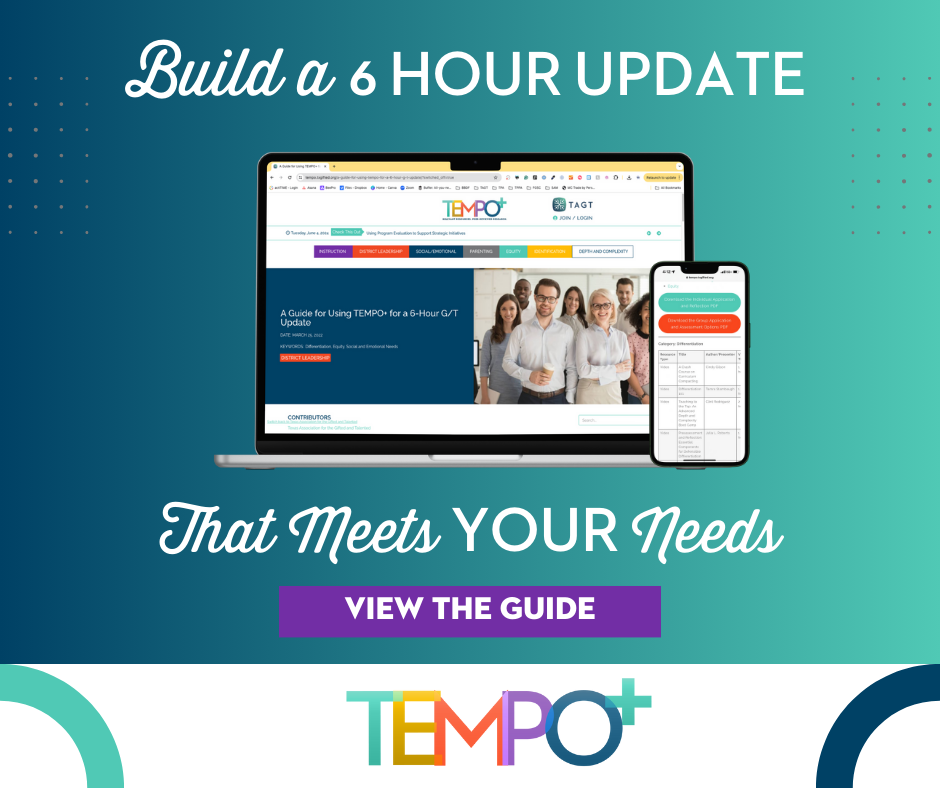In the last article, we discussed the necessity of teachers refining their craft. Seven strategies were provided from the Phoenix Training Center (PTC, 2023) that offered the goal of teachers creating “a more engaging, effective, and enriching classroom experience for their students” (para. 9). Each suggestion was considered in light of the nature and needs of gifted learners. Recommendations included extensive understanding of the ways good teaching requires a variety of skills, attitudes, and willingness to learn new things as keys to ensuring gifted students have appropriate and challenging learning opportunities.
Introduction
This article moves to the role of pedagogical content knowledge (PCK) in teaching and exploring its importance toward refining the teaching craft. Empowering teachers to reflect upon and refine their craft involves their taking charge of what they want to learn and how they want to learn it. Think about the following questions. What does this look like for teachers of the gifted working with elementary students . . . middle school students . . . high schoolers? How about teachers working with students in science classes, mathematics, and so on? How is what is taught presented and then perceived by gifted learners? How often do we take the time to solicit and then act on feedback from our students? Does that feedback imply that additional strategies may be needed to make the content more relevant and interesting? Would that require a better understanding of “what” we teach and “how” we teach it, also known as pedagogical content knowledge (Main, 2023)?
Pedagogical Content Knowledge and Positive Student Outcomes
Pedagogical content knowledge is not something that is “added on” to instructional skills, but rather is good teaching itself. In order for teaching to be effective it must be measured in positive student outcomes. Teachers of the gifted must not only know content, but also know it in such a way that students understand it as well as the teacher recognizing, predicting, and correcting misconceptions.
Knowledge of students, pedagogical skills, continuous professional development, and a collaborative environment are four areas that are designed to ensure student growth. These areas are further discussed below.
Knowledge of Students
Understanding the unique needs, interests, and learning strengths of students is the first step in implementing pedagogical content knowledge. Primary school teachers, for instance, may employ classroom observations to gather insights into student learning behaviors, which can then inform instructional approaches. Observations occur as students are in small groups or in independent work. The way students answer questions and, hopefully, pose questions, are important to add insight into students’ learning strengths and preferences. The same approaches can be used throughout the grade levels.
Interest inventories can also provide valuable information about the focus of academic strengths, types of tasks preferred or areas of interest. Consider how this information might be used to nurture their interests. In addition, think about how parents might provide relevant information, including how their child learns best. Renzulli (2021) compiled a series of instruments that are designed to assess various aspects of student interests. He provided six separate instruments, each targeted toward certain age groups and, in two cases, domain-specific interest in the arts.
Rimm-Kaufman and Sandilos (20232025) related that student relationships “have important, positive and long-lasting implications for both students’ academic and social development” (para..1) They continued that, even though,
solely improving students’ relationships with their teachers will not produce gains in achievement. However, those students who have close, positive and supportive relationships with their teachers will attain higher levels of achievement than those students with more conflict in their relationships. (para.1)
Their research found that, with trust between teacher and student, comes more engaged learning, ergo higher academic growth.
Additionally, knowledge of students, their current level of understanding of the content, and experience paired with academic instruction emphasizes the role of PCK in teaching. This knowledge guides academic instruction that is of high quality which includes “thinking and analysis, uses feedback effectively to guide students’ thinking, and extends students’ prior knowledge” (Rimm-Kaufman & Sandilos, 2025, para. 3). Knowledge of students provides guidance for the teacher to encourage deeper engagement with the content and make connections between core ideas and how they are structured in such a way that students show academic growth.
Cultivate Pedagogical Skills
Beyond subject knowledge and pedagogical knowledge, teachers must be equipped with a diverse toolkit of instructional teaching strategies that help their gifted learners understand the advanced content. This could involve learning how to simplify complex key concepts or addressing misconceptions students have in science or math, or understanding how to foster critical thinking and problem-solving skills across all content areas. Enveloping key concepts around content offers guidance to students about how they create new knowledge or connect learning to previous knowledge. For example, by having students extrapolate patterns in science or math, then asking them to determine if patterns repeat or if patterns create new patterns, complex thinking is triggered. For history or English language arts, the same tool asks students to think about patterns in this content to connect their learning from math or science, or vice versa. By organizing key concepts around content and connecting one core area to others, students use complex thinking abilities in new ways. For more insight into conceptual thinking access byrdseed.com (Byrd, 2024).
Critical Thinking and Problem Solving
Problem-solving and critical thinking skills find their core in problem-based learning (PBL). Gallagher (2015) stated, “Creative experts also tend to see creativity and problem-solving as deeply intertwined, especially when solving ill-structured problems” (Abstract). Her article explored the interrelationship between creative thinking and problem solving when students participate in authentic PBL.
For example, the following scenarios offer students a chance to use their critical and creative thinking with PBL before constructing their own scenarios that relate to either a past or current experiences. These scenarios are their springboard to critical and creative thinking with authentic situations. Students work on these teacher-created problems without direction or are given structure through by using the Creative Problem-Solving Process (Creative Education Foundation, 2024).
Primary: School Assembly. Once a month our school has an assembly program. Each grade takes a turn securing a program or performing themselves. This month grades 2 and 3 have decided to work together for a variety show. All the acts have been decided, and it is 30 minutes before show time. When the two grades’ head to the school’s auditorium, they discover that all the props are missing, and the main act singers are not at school. They have only a short time to find the props and substitute for the main act. Develop your resolution to this dilemma.
To solve this issue, use the following Creative Problem Solving (Parnes, 1992) format, and respond with your ideas about the concept of change and that change may be positive or negative:
- Fact Finding: What are the facts in the problem?
- Problem Finding: Write the problem in two different ways.
- Idea Finding: Choose the statement from Problem Finding that best describes the problem and brainstorm as many solutions as you can.
- My Best Solution: Write or illustrate how you would solve the problem.
After students indicate how to solve the problem, provide reflection time. Ask
- what they learned that was new to them,
- what they would do differently next time, and
- how their learning was or was not helped in this format.
Grades 2-6: Example 1. Concept: Conflict. Conflict may be intentional or unintentional. Students in Ms. Garcia’s fourth-grade class have found a problem at their school. They know that students in grades 4, 5, and 6 would like to have an all-school barbecue. Because of problems 10 years ago, this occasion was cancelled.
Create a plan that shows why the barbecue should or should not start again. Your solution will be presented to the principal and superintendent. If needed, use this chart for your plan.
- Fact Finding: What are the facts in the problem?
- Problem Finding: Write the problem in two different ways.
- Idea Finding: Choose the statement from Problem Finding that best describes the problem and brainstorm as many solutions as you can.
- My Best Solution: Write or illustrate how you would solve the problem.
Grades 2-6: Example 2. Concept: Power. Power is the ability to influence.
Option A: You really like to read. The books in the library are too simple for you and you can’t go to the town library. Since the library doesn’t have enough books for students like you, how can you solve this problem?
Option B: You really like math. The math problems in your class are too easy. You want to find harder problems. In what ways can you find harder problems to do?
- Fact Finding: What are the facts in the problem?
- Problem Finding: Write the problem in two different ways.
- Idea Finding: Choose the statement from Problem Finding that best describes the problem and brainstorm as many solutions as you can.
- My Best Solution: Write or illustrate how you would solve the problem.
After students indicate how to solve the problem, provide reflection time. Ask:
- what they learned that was new to them,
- what they would do differently next time, and
- how their learning was or was not helped in this format.
Secondary: A Prom. Concept: Force. Force and inertia are codependent. A problem has come up in the small school of 500 students, grades 9–12. You are a part of the leadership group that arbitrates decisions related to student interests. Your group consists of 12 students in the multigrade class, four freshmen, three sophomores, five juniors, and you, the one senior in the group.
It has come to your attention that many the students in all the grade levels would like to have an all-school prom prior to winter break. Because of problems in the past, some 10 years ago, this occasion was canceled and never reinstituted. Your class has been asked to create a plan for or against reinstitution of the prom. Make a presentation to the other students about your solution. Develop your plan after completing the following reasoning model (Paul & Elder, 1997):
- State the issue in your own words.
- List the facts.
- Discuss your suppositions based on the issue in No. 1.
- Name all viewpoints to be considered in the solution. Research origin of cancellation, previous proms, and all literature related to pros and cons of high school proms.
- What is your aim for the solution?
- Write an opinion statement based on the facts, viewpoints, and any research findings.
- What do you anticipate could be consequences of your solution?
After students indicate how to solve the problem, provide reflection time. Ask:
- what new learning they gained,
- how they would approach the problem if there was another concept to be addressed in the scenario, and
- what other ways could they have learned the content from their research or presented their findings.
With any of the problem-based learning scenarios, students dig deep into research surrounding the issue, connecting it to past experiences and current findings. Any technology that facilitates their efforts is infused in the process. A key concept and reflection piece should always be a part of their critical thinking and problem-solving process.
Embrace Continuous Professional Development
Regular, focused professional learning aimed at enhancing PCK can be instrumental in refining teachers’ craft. Workshops, seminars, or in-service training that marry content knowledge with effective pedagogical strategies fosters a culture of learning among staff. Any of these methods may be incorporated into a plan that reflects the current level of expertise in content with a SMART goal (specific, measurable, assignable (later changed to attainable), realistic, and time-related) (Doran, 1981) that addresses personal learning growth.
In addition to content expertise, professional learning sessions that offer concrete skills in capturing knowledge of students’ content understanding is essential (e.g., PBL). Understanding students, both their knowledge background and their current circumstances that open them to learning, calls for professional sessions that allow teachers to see master teachers at work in the classroom. This may be accomplished with peer learning sessions, learning virtually from master teachers in other schools, or visiting teachers known for their skills in this area.
What PL Strategies Support PCK?
It is important to note that planning high-quality instruction that challenges gifted students requires that a teacher is not only knowledgeable about advanced content, but also skilled in the specific instructional strategies that are most effective in teaching the content. Professional learning should emphasize content-specific curriculum and methodologies used within the discipline that promote the development of expertise. Thus, there are a number of important issues to consider when empowering teachers to refine their craft.
- Teachers are provided with strategies for supporting PCK that are research-based or support best practices in the field.
- Teachers have choices in the types of professional learning that best meets their needs with a variety of opportunities to be actively involved.
- Professional learning is differentiated. Teachers new to working with gifted learners may need more scaffolding and an opportunity to collaborate other educators teaching similar subject matter.
- Teachers are encouraged to practice, reflect upon, and adapt new understandings of the content and instructional strategies (PCK) with their students.
Table 1 provides examples of resources to help support effective professional learning related to PCK.
Table 1
Resources to Support Professional Learning Related to PCK
| Resource | Description |
| CEC Initial Practice-Based Professional Preparation Standards for Gifted Educators (K–12) (Draft, 2024) Standard 1: Engaging in Professional Learning and Ethical Practice. Candidates engage in ongoing professional learning; conduct action research; and use foundational knowledge of the field of gifted education, legal policies and procedures, research, professional ethical principles, evidence-based practices, and reflections to create inclusive environments, inform gifted education practice, and advocate to meet the needs of each learner while considering their diversity.Standard 3: Demonstrating Subject Matter Content and Specialized Curricular Knowledge. Candidates implement advanced content and culturally responsive curriculum by modifying the general or selecting, modifying, or designing specialized curriculum to advance the learning progress for students with gifts and talents. | Provides standards describing the knowledge, skills, and dispositions necessary for individuals to meet the needs of gifted learners. |
| NAGC-CEC Advanced Standards in Gifted Education Teacher Preparation (2013) (https://cdn.ymaws.com/nagc.org/resource/resmgr/knowledge-center/Advanced_Standards_in_Gifted.pdf) Curricular Content Knowledge 2.0 Gifted education specialists use their knowledge of general and specialized curricula to improve programs, supports, and services at classroom, school, community, and system levels.2.2 Gifted educators continuously broaden and deepen professional knowledge and expand expertise with instructional technologies, curriculum standards, effective teaching strategies, and assistive technologies to support access to and learning of challenging content.6.0 Gifted education specialists use foundational knowledge of the field and professional ethical principles and Program Standards to inform gifted education practice, engage in lifelong learning, advance the profession, and perform leadership responsibilities to promote the success of professional colleagues and individuals with exceptionalities. | Provides guidance on how teachers might reflect on and pursue their professional growth. These standards describe the knowledge, skills, and dispositions necessary for individuals to practice at “accomplished” levels of gifted education and in advanced gifted education roles. |
| NAGC Pre-K-Grade 12 Gifted Programming Standards 2019) https://cdn.ymaws.com/nagc.org/resource/resmgr/knowledge-center/nagc_2019_prek-grade_12_gift.pdf Programming Standard 6: Professional Learning | Describes intentional, sustained development of professional expertise essential for all educators (administrators, teachers, counselors, and other instructional support staff) involved in the development and implementation of gifted programs and services. Standard 6 covers five student outcomes: Talent Development, Psychosocial and Social-Emotional Development, Equity and Inclusion, Lifelong Learning, and Ethics (NAGC, 2019). |
| Best Practices in Professional Learning and Teacher Preparation in Gifted Education: Professional Development for Teachers of the Gifted in the Content Areas (Weber & Novak, 2020) | Presents a variety of practical strategies for cultivating teachers’ pedagogical content knowledge (PCK) are outlined in various academic subject areas and also includes suggestions for the visual and performing arts and foreign languages. |
| LEAP Curriculum Guidebook (Weber & Mofield, 2023) | Explores the features of high-quality curriculum and how it is responsive and relevant to the needs of gifted students. This resources includes opportunities to identify examples of evidence-based curriculum, plan meaningful learning experiences, and incorporate student voice, choice, interests, and agency into curriculum planning. |
| LEAP Online Curriculum Modules (Mofield & Weber, 2023) | Includes six hour-long self-paced modules expanding upon the topics in the guidebook including: Module 1: Examining Features of High-Quality Curriculum, Module 2: Selecting and Evaluating Curriculum for Gifted and High-Potential Students, Module 3: Designing Challenging Learning Experiences for Gifted and High-Potential Students, Module 4: Incorporating Inquiry-Based Learning in Curriculum for Gifted and High-Potential Students, Module 5: Assessing for and Reflecting on Gifted Students’ Learning |
Promote a Collaborative Environment
The sharing of knowledge for teaching among colleagues proves invaluable. This could take the form of shared lesson planning sessions or peer observations, fostering a collaborative culture. Dreambox (2023) suggested the following five approaches to professional learning that add to the teachers’ toolbox and provide strategies for effective professional learning:
- Provide collaborative demonstrations and opportunities for hands-on learning. Interactive session with other educators produces the opportunity to learn new approaches and strategies.
- Focus on long-term development. The one-and-done format for professional learning is past. Time should be given for teachers to practice a skill, reflect on its effectiveness, work with a mentor, and refine their new ideas and strategies.
- Ensure PD is relevant and practical. Any professional learning time must apply directly to the classroom and the teachers’ specific needs. If needed, outside experts and/or mentors may join the sessions.
- Offer choice and flexibility. Multiple sessions that offer a wide variety of tools for teachers should be offered. Along with choice in what the teachers access, the means of access is equally important.
- Continuously assess your PD program. Any professional learning should be evaluated for its relevance and effectiveness. Teachers’ voices must be heard and must be a part of the planning process.
Conclusion
The role of pedagogical content knowledge in refining teaching and exploring its importance empowers teachers to reflect upon and refine their craft. In this way they take charge of what they want to learn and how they want to learn it. Exploring pedagogical content knowledge and cultivating pedagogical skills, focusing on positive student outcomes, developing knowledge of students’ backgrounds and learning strengths, embracing opportunities for continuous professional learning, and promoting a collaborative environment among colleagues provides growth not only in students, but also within the refinement of teachers’ personal teaching craft.
Authors’ Note. Table 1 supports professional learning and PCK. In addition, “The Initial and Advanced Preparation Standards for Gifted Education Professionals” (Council for Exceptional Children, 2024) lay out the knowledge and skills that professionals in gifted education should master (https://exceptionalchildren.org/gifted-education-professional-standards). From the website is the following description:
For over a decade, the Council for Exceptional Children (CEC), our The Association for the Gifted (TAG) Special Interest Division, and the National Association for Gifted Children (NAGC) have worked collaboratively to develop standards for the preparation of gifted education professionals. Ensuring that highly able learners are recognized and subsequently served through systematic programming is critical for developing high-quality, classroom-based opportunities for advanced student learning.
The Initial Preparation Standards for Gifted Education Professionals define what a gifted education candidate must know and be able to do to begin teaching.
The Advanced Preparation Standards for Gifted Education Professionals lay out the knowledge and skills that teachers in gifted education should master as part of their preparation for advanced professional practice.
References
Byrd, I. (2024). Themes and generalizations. Byrdseed. https://www.byrdseed.com/start-the-year-with-themes-generalizations/#prove
Council for Exceptional Children. (2024). The initial and advanced preparation standards for gifted education professionals. https://exceptionalchildren.org/gifted-education-professional-standards
Creative Education Foundation. (2024). What is creative problem solving? https://www.creativeeducationfoundation.org/what-is-cps
Doran, G. T. (1981). There’s a S.M.A.R.T. way to write management’s goals and objectives. Management Review, 70, 35-36.
Dreambox. (August 30, 2023). 5 ways to make professional development more effective for educators. https://www.dreambox.com/resources/blogs/5-ways-to-make-professional-development-more-effective-for-educators
Gallagher, S.A. (2015). The role of problem-based learning in developing creative expertise. Asia Pacific Education Review, 16, 225–235. https://doi.org/10.1007/s12564-015-9367-8
Main, P. (2023, January 26). Pedagogical content knowledge. https://www.structural-learning.com/post/pedagogical-content-knowledge
Mofield, E., & Weber, C. L. (2023). LEAP education modules for curriculum design for teachers of gifted and high-potential students (5 modules). National Association for Gifted Children.
National Association for Gifted Children. (2019). 2019 Pre-K–Grade 12 Gifted Programming Standards. http://www.nagc.org/sites/default/files/standards/Intro%202019%20Programming%20Standards.pdf
Parnes, S. (1992). Source book for creative problem solving. Creative Foundation Press.
Paul, R., & Elder, L. (1997). Foundation for critical thinking. https://www.criticalthinking.org
Phoenix Training Center. (2023). Refining the craft: Seven strategies for elevating your teaching approach. https://phxtraining.com
Renzulli, J. (2021). Interest-a-lyzer family of instruments. https://doi.org/10.4324/9781003422051
Rimm-Kaufman. S., & Sandilos, L. (2015, March 9, updated March 2025). Improving students’ relationships with teachers to provide essential supports for learning. American Psychological Association. https://www.apa.org/education-career/k12/relationships
Weber, C. L., & Mofield, E. L. (2023). LEAP education guidebook on curriculum design for teachers of gifted and high-potential students. National Association for Gifted Children.
Weber, C. L., & Novak, A. M. (Eds.). (2020). Best practices in professional learning and teacher preparation: Professional development for teachers of the gifted in the content areas (Vol. 3). Prufrock Press.
Increasing Understanding of Pedagogical Content Knowledge PDF
